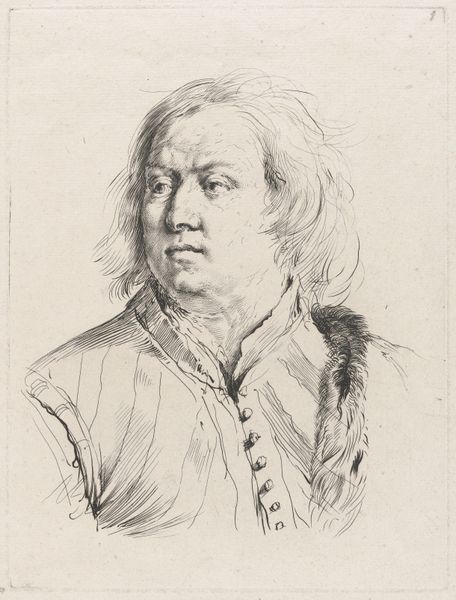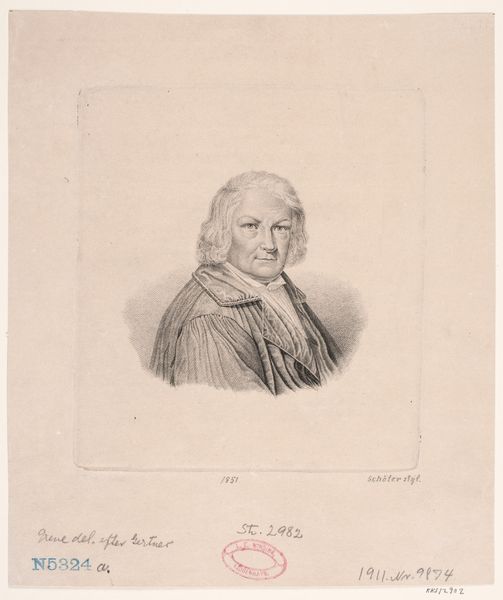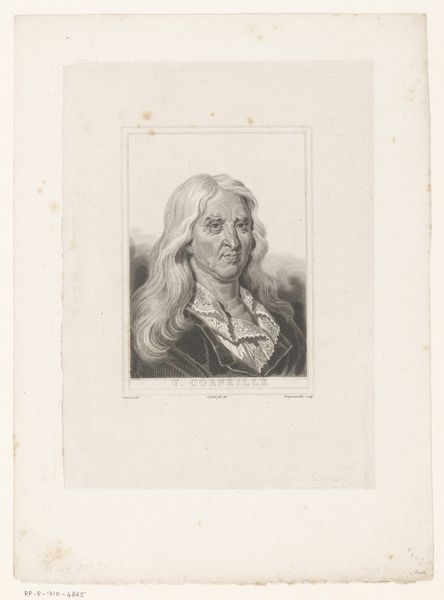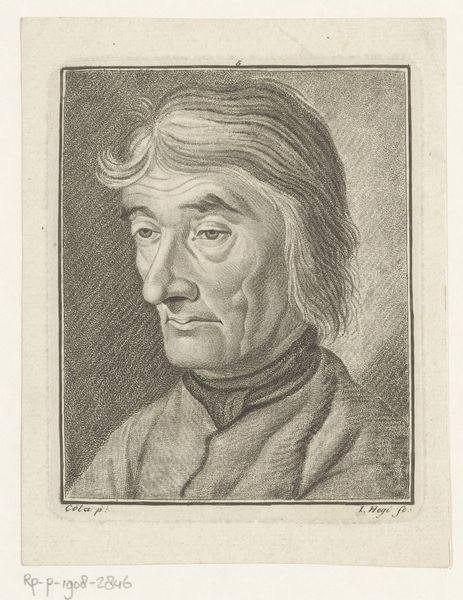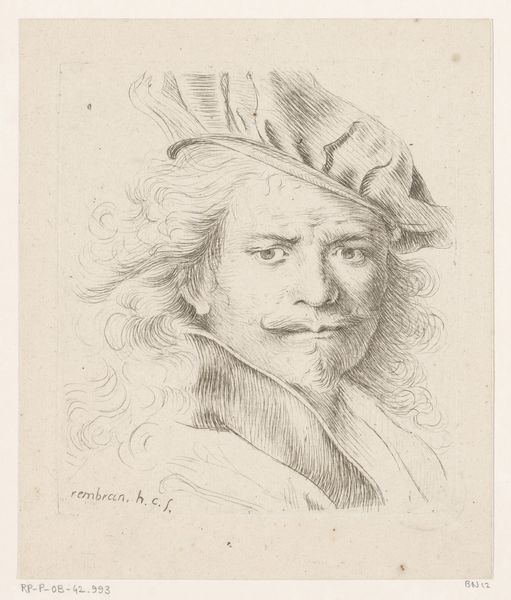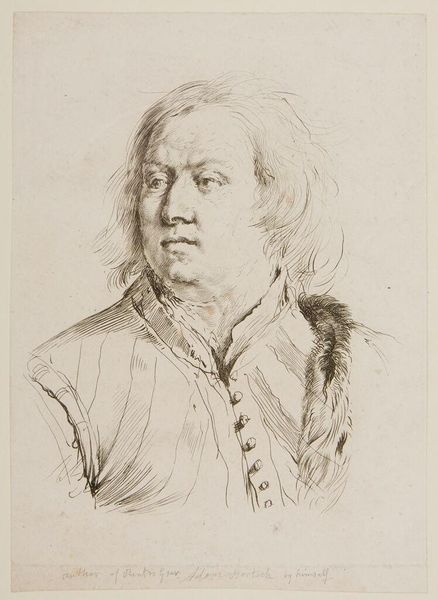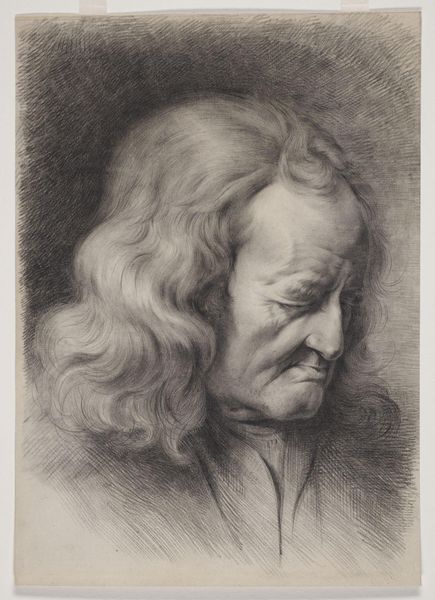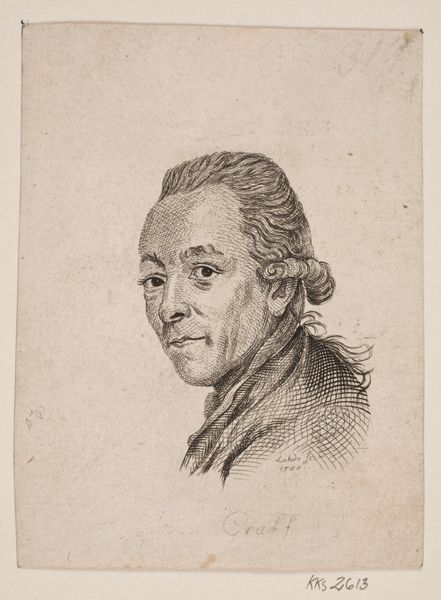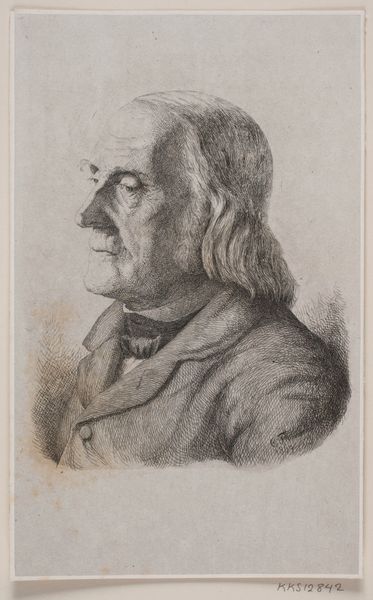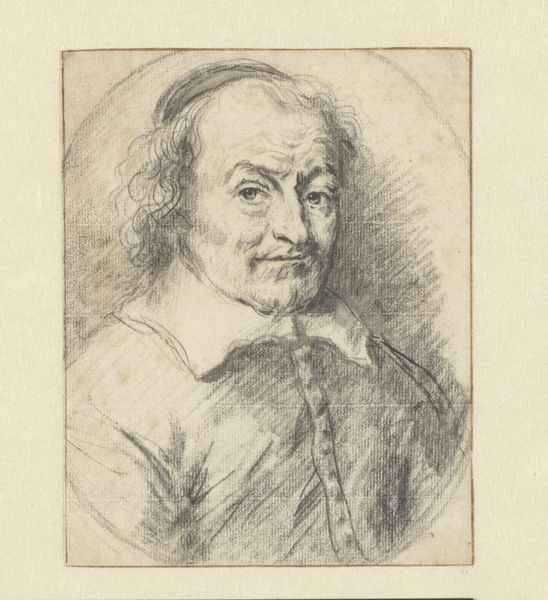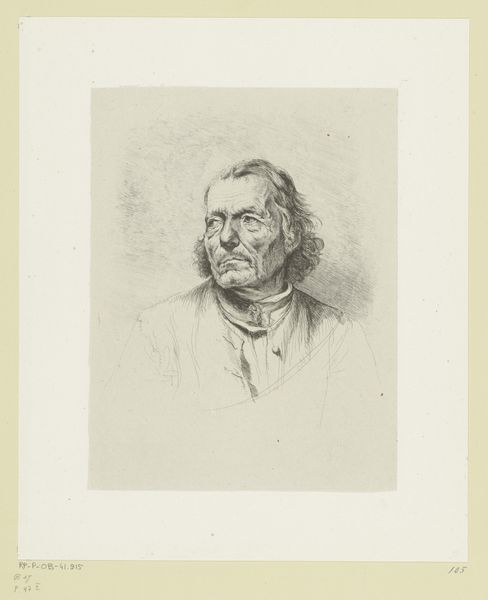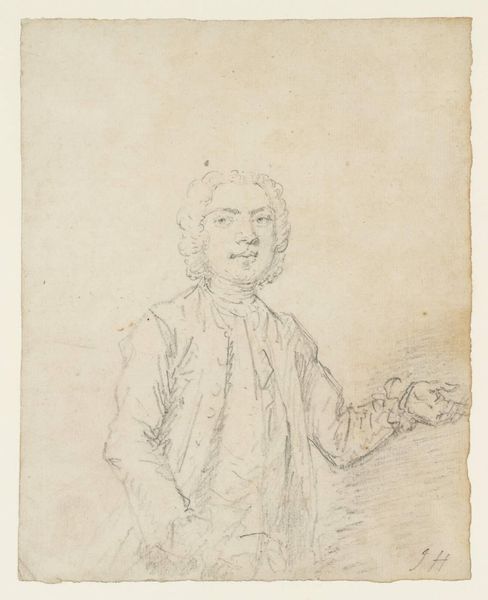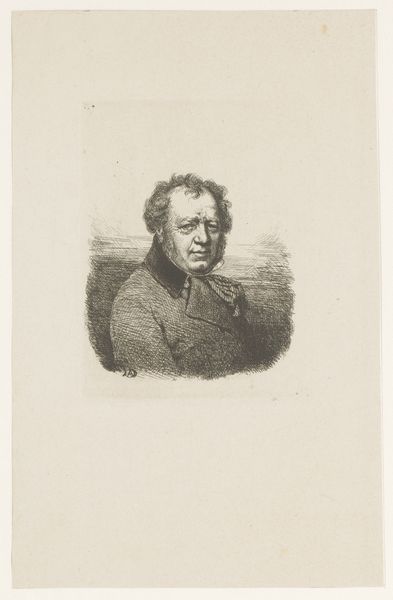
drawing, ink, pencil
#
portrait
#
drawing
#
ink
#
pencil drawing
#
romanticism
#
pencil
#
portrait drawing
#
realism
Dimensions: height 177 mm, width 124 mm
Copyright: Rijks Museum: Open Domain
Curator: We are looking at a piece titled, "Portret van Konrad Eberhard," created sometime between 1800 and 1870 by Johann Nepomuk Muxel, using pencil and ink. Editor: It has such a transient feel to it, so softly rendered, almost ghost-like. There is a palpable vulnerability within the figure, yet his steady gaze projects fortitude. Curator: Notice the fine, delicate hatching lines defining the contours of Eberhard’s face, the subtle gradations building form. The meticulous rendering of his features suggests the artist’s attention to the specifics of likeness, and the desire for representation is self-evident here. Editor: Indeed, one can almost feel the artist's hand moving across the paper, see his dedication and patience. I am curious, what type of ink and paper did Muxel employ? Surely this would illuminate our perception of the labor invested. Also, one could ask: was this an intimate commission, reflecting the bourgeoning commercial trade between artists and those wishing to partake in aesthetic expressions and preserve the likeness of individuals? Curator: The lines around his eyes denote great skill but also reveal the weariness around those lines; that can easily point to social realism within Romantic portraiture as a genre of its time. Furthermore, the portrait conforms to the standards of mimetic representation, with a concentration on accurate likenesses that embody core academic ideals of Romanticism. Editor: And yet, the texture! You cannot separate his long hair from his garment: his being looks to become pure visual surface. This visual weight of materiality reflects an individual within a very specific society, doesn't it? This would be such an excellent piece to trace the movement and adoption of techniques used within pencil production itself. Curator: It has certainly left a memorable impression in monochrome shades. Thank you for adding to this close reading. Editor: A pleasure. Considering the period it's quite rewarding to focus on materials that still speak so vibrantly to us.
Comments
No comments
Be the first to comment and join the conversation on the ultimate creative platform.
